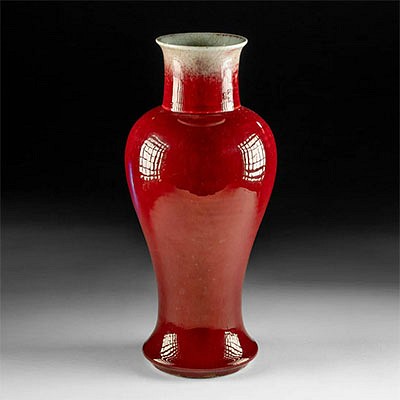Imposing African Igbo Wood Nude Male Figure (Alusi)
Lot 296
About Seller
Artemis Fine Arts
686 S Taylor Ave, Ste 106
Louisville, CO 80027
United States
Selling antiquities, ancient and ethnographic art online since 1993, Artemis Gallery specializes in Classical Antiquities (Egyptian, Greek, Roman, Near Eastern), Asian, Pre-Columbian, African / Tribal / Oceanographic art. Our extensive inventory includes pottery, stone, metal, wood, glass and textil...Read more
Categories
Estimate:
$4,000 - $6,000
Absentee vs Live bid
Two ways to bid:
- Leave a max absentee bid and the platform will bid on your behalf up to your maximum bid during the live auction.
- Bid live during the auction and your bids will be submitted real-time to the auctioneer.
Bid Increments
| Price | Bid Increment |
|---|---|
| $0 | $25 |
| $300 | $50 |
| $1,000 | $100 |
| $2,000 | $250 |
| $5,000 | $500 |
| $10,000 | $1,000 |
| $20,000 | $2,500 |
| $50,000 | $5,000 |
| $100,000 | $10,000 |
| $200,000 | $20,000 |
About Auction
By Artemis Fine Arts
May 11, 2023
Set Reminder
2023-05-11 10:00:00
2023-05-11 10:00:00
America/New_York
Bidsquare
Bidsquare : Fine Antiquities, Asian, Pre-Columbian, Ethnographic Art
https://www.bidsquare.com/auctions/artemis-gallery/fine-antiquities-asian-pre-columbian-ethnographic-art-12771
Classical antiquities, ancient and ethnographic art from cultures encompassing the globe. Artemis Fine Arts info@artemisgallery.com
Classical antiquities, ancient and ethnographic art from cultures encompassing the globe. Artemis Fine Arts info@artemisgallery.com
- Lot Description
**Originally Listed At $3000**
West Africa, Nigeria, Igbo people, ca. early 20th century CE. A tall hand-carved and painted wood male figure associated with the deities known as Alusi (Arusi), of an imposing size free standing on a pair of wedge-shaped feet. The figure is nude with a prominent belly button and genitalia, the hands cupped at the front and a broad panel of scarification across the chest and face and wearing a conical cap/ coiffure with cotton cords wrapped around the ankles. Such Alusi figures are placed in shrines and venerated as family guardians, the open hands indicating a generous nature as well as readiness to receive offerings. The scarification marks are for beautification and indicate adulthood, while the white on the face indicates purity. Size: 13" L x 11" W x 56" H (33 cm x 27.9 cm x 142.2 cm)
A similar example can be viewed on the Metropolitan Museum of Art's website, accession number: 2019.477.2.
PLEASE NOTE: Due to recent increases of shipments being seized by Australian & German customs (even for items with pre-UNESCO provenance), we will no longer ship most antiquities and ancient Chinese art to Australia & Germany. For categories of items that are acceptable to ship to Australia or Germany, please contact us directly or work with your local customs brokerage firm.
Please note that this item is heavy/oversized. Please inquire about shipping prior to bidding.
Provenance: private New York, New York, USA collection; ex-Miles and Shirley Fiterman collection, Minneapolis, Minnesota, USA, 1990s
All items legal to buy/sell under U.S. Statute covering cultural patrimony Code 2600, CHAPTER 14, and are guaranteed to be as described or your money back.
A Certificate of Authenticity will accompany all winning bids.
We ship worldwide and handle all shipping in-house for your convenience.
#175698Right foot repaired with break line visible and losses to heel of other foot. Abrasions to high pointed areas and losses to painted surface layers as shown. Staining and discoloration to cotton cords on ankles. Some pigment transfer when red surface is handled.Condition
- Shipping Info
-
All shipping is handled in-house for your convenience. Your invoice from Artemis Gallery will include shipping calculation instructions. If in doubt, please inquire BEFORE bidding for estimated shipping costs for individual items. In most cases Artemis Gallery cannot ship to Australia and Germany, please inquire before bidding.
-
- Buyer's Premium



 EUR
EUR CAD
CAD AUD
AUD GBP
GBP MXN
MXN HKD
HKD CNY
CNY MYR
MYR SEK
SEK SGD
SGD CHF
CHF THB
THB














